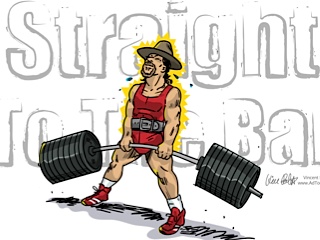
You don’t have to be a genius to know that injuries often go with exercise activities. And so, if you’ve been spending much time training or competing as of late, you might as well learn how to handle injuries if they do happen.
Specifically, you must familiarize yourself with the various ways of managing pain and facilitating recovery–particularly those that are natural, as they’re generally cheap and non-invasive.
Get More Vitamin C
Vitamin C is crucial in the production of collagen–the key structural protein of our connective tissues. Having sufficient supply of this micronutrient not only enhances collagen synthesis but also improves tensile strength.
Fight Inflammation
Yes, there’s such a thing as a healthy amount of inflammation. After all, the body responds to the presence of swelling by repairing the damage that caused it.
However, prolonged periods of inflammation puts the immune system in high gear. This often leads to even more swelling throughout the injured area, which in turn inhibits healing.
You’ll have to make inflammation reduction a priority if you want to ease your pain and speed up your recovery. Cut back on sugar, oil, and processed food as these tend to worsen inflammation.
Load Up on Protein
Protein is necessary for repairing damaged muscle fibres.
Supplement your daily intake with one to two extra servings of protein. Better yet, aim to consume at least one gram of protein for every kilogram of body weight.
Although that may seem difficult, it’s often as easy as adding more fish, eggs, low-fat dairy, chicken, or plant proteins to what you usually consume each day.
Rest Your Injury
People often underestimate how proper rest affects the healing process. Well, resting helps prevent further complications of injuries. It also gives connective tissues time to rebuild and gain strength.
If you’ve been following a certain exercise routine before getting injured, just stay off of it as you heal up. You may switch to a less demanding workout to lessen the strain–but only once you’re ready.
Try Some Topicals
Natural topical treatments (e.g. menthol, camphor, and capsaicin) provide quick relief whenever you’re struggling with pain. These are often just as good as their over-the-counter counterparts.
Consider Kratom
Kratom, a natural analgesic that’s become popular as of late, contains alkaloids that provide pain relief. Though it’s often compared to opioid drugs, kratom is much safer–for one, there’s little to no risk of hypoventilation.
Aside from that, it’s being used by those trying to fight against opioid dependence. The herb is capable of reducing the severity of withdrawal symptoms, making it easier to recover from addiction.
Time to Meditate
In order to really facilitate healing and fight pain, you need to have the right mindset. You should be mindful of what you tell yourself. Oftentimes, injuries are not as bad as they look.
Exercising mindfulness through meditation can help you become more aware of your body. It also puts you in a positive frame of mind that will definitely be helpful in promoting healing.
Overcome the Odds
Recovering from an injury is a process that can put a physical and emotional toll on any athlete. Natural remedies help reduce the burden by managing pain and promoting fast healing.










0 Comments